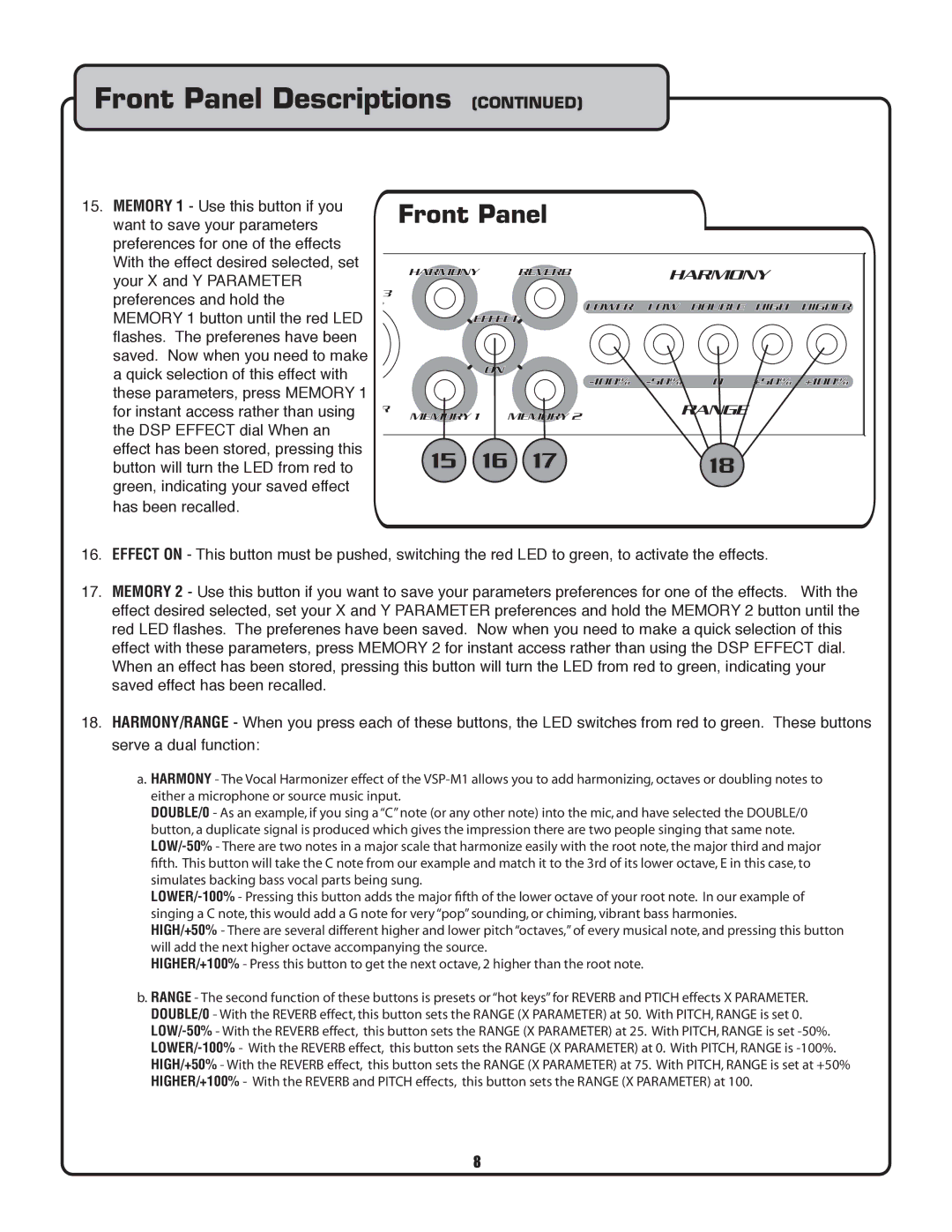
Front Panel Descriptions (CONTINUED)
15.MEMORY 1 - Use this button if you want to save your parameters preferences for one of the effects With the effect desired selected, set your X and Y PARAMETER preferences and hold the MEMORY 1 button until the red LED flashes. The preferenes have been saved. Now when you need to make a quick selection of this effect with these parameters, press MEMORY 1 for instant access rather than using the DSP EFFECT dial When an effect has been stored, pressing this button will turn the LED from red to green, indicating your saved effect has been recalled.
Front Panel
15 | 16 | 17 | 18 |
16.EFFECT ON - This button must be pushed, switching the red LED to green, to activate the effects.
17.MEMORY 2 - Use this button if you want to save your parameters preferences for one of the effects. With the effect desired selected, set your X and Y PARAMETER preferences and hold the MEMORY 2 button until the red LED flashes. The preferenes have been saved. Now when you need to make a quick selection of this effect with these parameters, press MEMORY 2 for instant access rather than using the DSP EFFECT dial. When an effect has been stored, pressing this button will turn the LED from red to green, indicating your saved effect has been recalled.
18.HARMONY/RANGE - When you press each of these buttons, the LED switches from red to green. These buttons serve a dual function:
a.HARMONY - The Vocal Harmonizer effect of the
either a microphone or source music input.
DOUBLE/0 - As an example, if you sing a “C” note (or any other note) into the mic, and have selected the DOUBLE/0
button, a duplicate signal is produced which gives the impression there are two people singing that same note.
simulates backing bass vocal parts being sung.
singing a C note, this would add a G note for very “pop” sounding, or chiming, vibrant bass harmonies.
HIGH/+50% - There are several different higher and lower pitch “octaves,” of every musical note, and pressing this button
will add the next higher octave accompanying the source.
HIGHER/+100% - Press this button to get the next octave, 2 higher than the root note.
b.RANGE - The second function of these buttons is presets or “hot keys” for REVERB and PTICH effects X PARAMETER. DOUBLE/0 - With the REVERB effect, this button sets the RANGE (X PARAMETER) at 50. With PITCH, RANGE is set 0.
8
